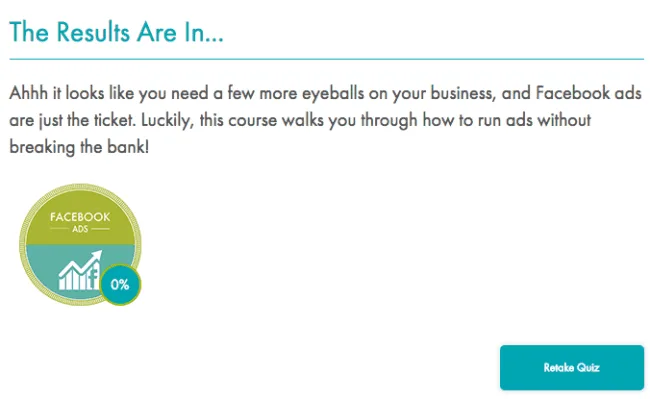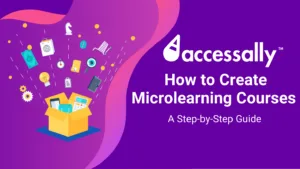There’s a reason that the entertainment industry is a billion dollar business: we’re endlessly fascinated by stories.
We love a good storyline in a movie, a book, or a video game… even around a campfire.
So the question is this: why would an online course be any different?
For many years now, we’ve been following the academic way of creating courses… but let’s check:
If someone where to ask your 7 year old self if you’d rather “do your homework” or “listen to a story”, you’d likely opt for the story.
Human beings are wired to learn via story, but often the power of story is exploited to market an ecourse rather than teach it.
Although I’m often guilty of delivering my courses in a more academic way myself, I’m getting more and more excited about the new ways we’re pioneering to educate, inspire, and enlighten… beyond sharing mere facts.
With that end in mind, here are 3 e-learning tips and tricks you can use incorporate story into your next online course:
3 E-Learning Tips And Tricks To Incorporate Story Into Your Online Course
#1 Use Narrative To Guide People From Module To Module
Online courses are often composed of multiple lessons – or modules.
The problem is that many students might lose interest and motivation at some point. When this happens, they often fail to progress and simply “give up.”
So this is where you can get creative in designing your ecourse, crafting a gamification narrative for your students to go through as they unlock course modules, complete challenges or quizzes, and share their victories on social media.
Gamification in learning provides a lot of opportunities for you to increase engagement and improve retention.
For this to work, the way you design your course interface matters.
[Tweet “The way you present your course material always matters. #marketing #onlinebiz “]
For example, say you’re offering a course that teaches individuals how to travel smarter.
The goal is for them to learn relevant tips and shortcuts to use when booking flights on a multi-flight trip.
… so you create a course where the student plays the role of a young “orphan” who needs to learn how to book flights across the globe to find his parents.
To increase the fun and excitement of your storyline, you might add little easter eggs and hints throughout your membership site with tidbits about where to travel to next.
You can also use tools like multiple-choice quizzes to enhance the storyline and bring it to life.


#2 Design a “Choose Your Own Adventure” Ecourse
Another of our favorite e-learning tips and tricks is designing an online course that has a “choose your own adventure” feel.
With this setup, learning modules aren’t sequential. Rather, they’re recommended based on the individual’s needs.
There are two ways to do this:
Let The Student Choose Their Own Course Indirectly, Through An Assessment Quiz
An assessment or analysis quiz can be used to point your students to the “next step.”
We used this technique to point our students to the course that fits their needs best inside our membership site:


Allow The Student To Choose Their Own Course Directly
The other “choose your own course” method works similar to the old text-based games.
With this design, your student is given a choice at the end of each module as to where they’d like to go next.
For example, you might have a wilderness course that teaches basic survival skills. Each lesson is set up with a particular scenario in mind.
Once the student passes a lesson that teaches how to survive a sub-zero night (with only a lean-to and a wool blanket for warmth!) he gets to choose:


Each button is then linked to a related module inside your online course.
With careful thought and mapping, a student might have several paths to choose from along the way… and feel as though they’re receiving a totally personalized experience throughout.
#3 Weave Story Into The Fabric Of Your Course Content
The first two e-learning tips and tricks are focused on how you set up your online course.
But this third (and final) method of storytelling has to do with how you prepare the course content itself.
Instead of having regular old PowerPoint slides with lots of text and data for people to absorb… Why not teach concepts through stories themselves?
You don’t need to create a “moral of the story” rubric at the end of your course content, but you can share your personal stories, or those of students who have implemented your ideas, too.
A contextual story paints a more vivid picture in the mind of the student who might be struggling to apply the lesson to “real life.”
It’s also a way to add humor and dramatic effect to what might otherwise be a kind of bland (but important) lesson.
Not sure where to begin?
You can start simply by adding testimonials or case studies of “success stories” throughout your content, sharing a picture of what can happen when the lessons are implemented in real life.
So…How Are You Telling Your Story?
These are just three of the many e-learning tips and tricks you can use when implementing storytelling into your online courses.
Click to learn more about the advantages of e-learning.
The more you dive into this timeless style of presentation, the more you’ll be able to bring your course material to life.
So the only remaining question is really: how are you telling your story?







